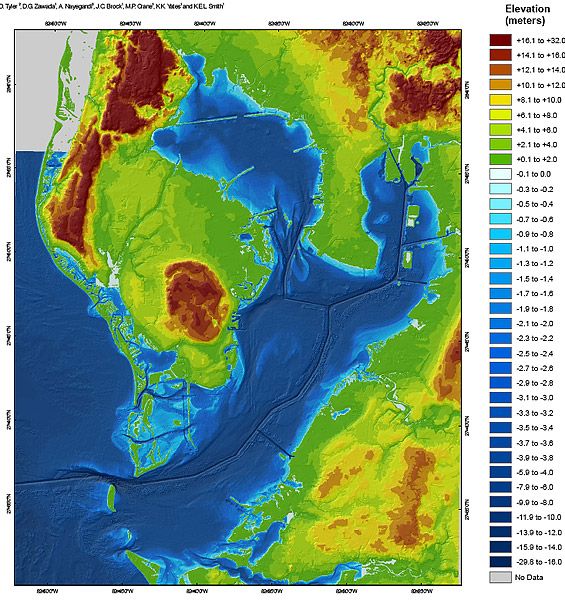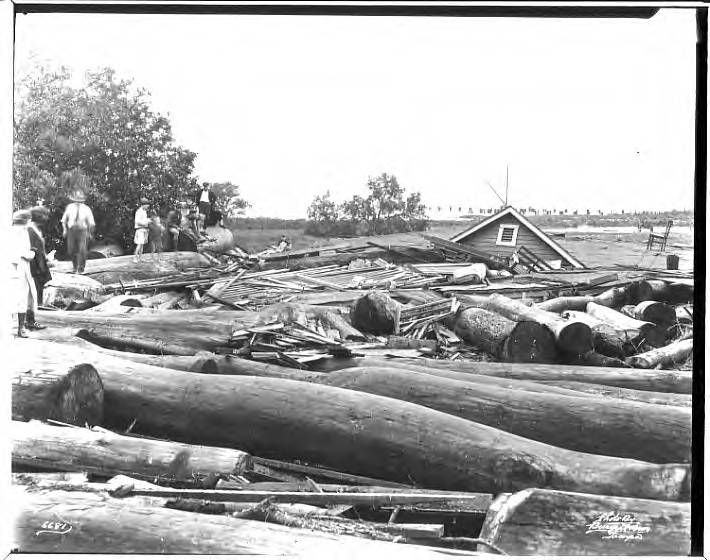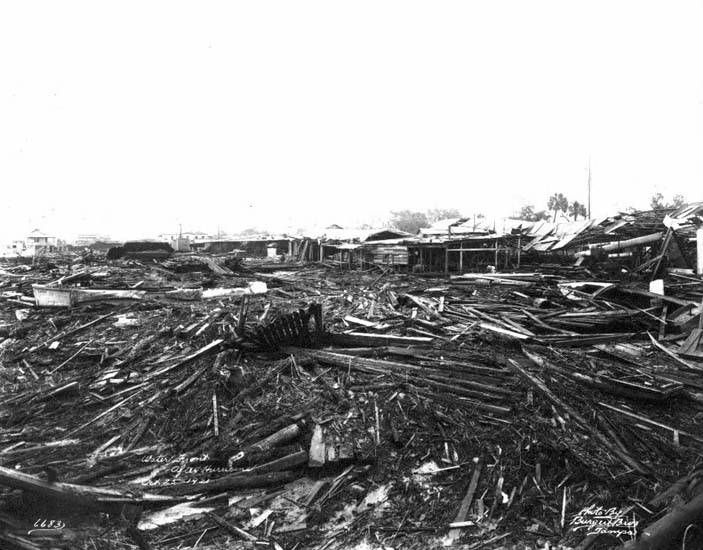This year marks 100 years since Tampa Bay took a direct hit from a major hurricane. The storm is known as the Tampa Bay Hurricane of 1921 and it devastated much of Tampa Bay. Our population has grown by nearly three million people since we were last hit, making our area exceptionally vulnerable.
The Hurricane of 1921 made landfall as a Category 3 over Tarpon Springs. The storm came in from the southwest and this trajectory is the worst-case scenario for Tampa Bay, especially when it comes to storm surge. At the height of the storm, parts of Pinellas County were split into two islands as the surge from Tampa Bay overflowed back into the Gulf.
"Not only are you cutting off part of Pinellas County from the other part," says Brian McClure, Bay News 9 Meteorologist, "but you're cutting off what little transportation such as your roads that you had in and out, now they're cut off."

There's no question that a storm like this will happen again. The return rate is about every 100 to 150 years. Statistically speaking, we are in that window, and chances are we will eventually see one in or near Tampa Bay. It may not happen for another 10 years or another 50 years, but the day will come.
The surge from the 1921 Tampa Bay Hurricane inundated downtown Tampa with 10.5 feet of water.

The surge was so bad in Tampa Bay because of the hurricane's trajectory. The storm came in from the southwest and made landfall just north of Tampa Bay. A hurricane moving on this path will force a lot of water into Tampa Bay, resulting in a serious storm surge.
"Irma was totally different," says Brian McClure. "It sucked water away from the bay."
Hurricane Irma made landfall south of Tampa Bay and that meant we had strong offshore winds pushing water away from the bay, rather than strong onshore winds like the 1921 hurricane.
"Then you have what we considered a small Tropical Storm Eta, it was a hurricane briefly but it really was a tropical storm when it came through. There was three feet of water right across the roads on the barrier islands," adds McClure.
Homes near John's Pass flooded, including one home that took on 2.5 feet of water. The surge from Tropical Storm Eta flooded parts of Bayshore in Tampa and 33 people were rescued in Pinellas County from high water.
What would happen if another hurricane like the 1921 Tampa Bay Hurricane hit today?
First, we know was a 3.5-foot surge looks like in Tampa after recently experiencing Tropical Storm Eta, where it flooded Bayshore Drive. The surge from the 1921 hurricane was reported to be seven feet higher. That means the surge in downtown Tampa reached 10.5 feet. This would place the water level there up to the second-story balcony on many coastal buildings.
Many of our airports would flood, including parts of Tampa International, Clearwater St. Pete International, Peter O'Knight and Albert Whitted Airport.

Other important pieces of infrastructure would be submerged or affected by the surge, such as the wastewater treatment facility and the gas storage tanks.
Transportation would come to a halt across coastal areas, especially in Pinellas County, because parts of it could become an island.
Tampa Bay would not only flood the cities right on the coast, but the water would flow and take the path of least resistance. A bayou cuts across Pinellas County starting near Feather Sound and flows toward the Gulf. A stretch of Pinellas County would be submerged, essentially splitting the county into two islands.

"The water gets shoved up into the Bay," says McClure. "Not only does it start to then spill over onto land and into your cities, but then it tries to come back out. If you're shoving the water into the mouth of the bay, it can only go where the course of least resistance is, the lowest-lying areas."
Fortunately, our cities are not below sea level. Cities such as New Orleans and Houston have several communities that are below sea level.
"If it comes at us, we're going to have a problem day of and during recovery," says McClure. "At least the water isn't going to sit in downtown. It will go funneling back out."

One of the biggest problems we would see in Tampa Bay with a storm like the 1921 hurricane would be in the days immediately following the hurricane: finding basics such as food and water or establishing transportation to send out supplies to areas hard hit. The recovery could be a shell shock to many people.

The population around Tampa Bay has grown by nearly three million people since the 1921 hurricane. The population boom over the last century has made Tampa Bay especially vulnerable.
"Now you have so many people right here in the Bay Area. Yeah, you can leave, but eventually, everybody wants to come back," adds McClure. "That's the part that worries me, the infrastructure build-out then the repair afterward. How long does it take?"
McClure notes that some people never returned back to New Orleans after Hurricane Katrina.

One of the things about studying past storms is knowing what eventually happened. We can use that information to predict what may happen again in a similar situation when another storm like it strikes our area again. The best thing to do is be prepared ahead of any hurricane season. All it takes is one hurricane to hit your community to make any season a bad one.
It's not difficult to survive a hurricane, but proper planning ahead of any storm makes the days following the hurricane less challenging.








